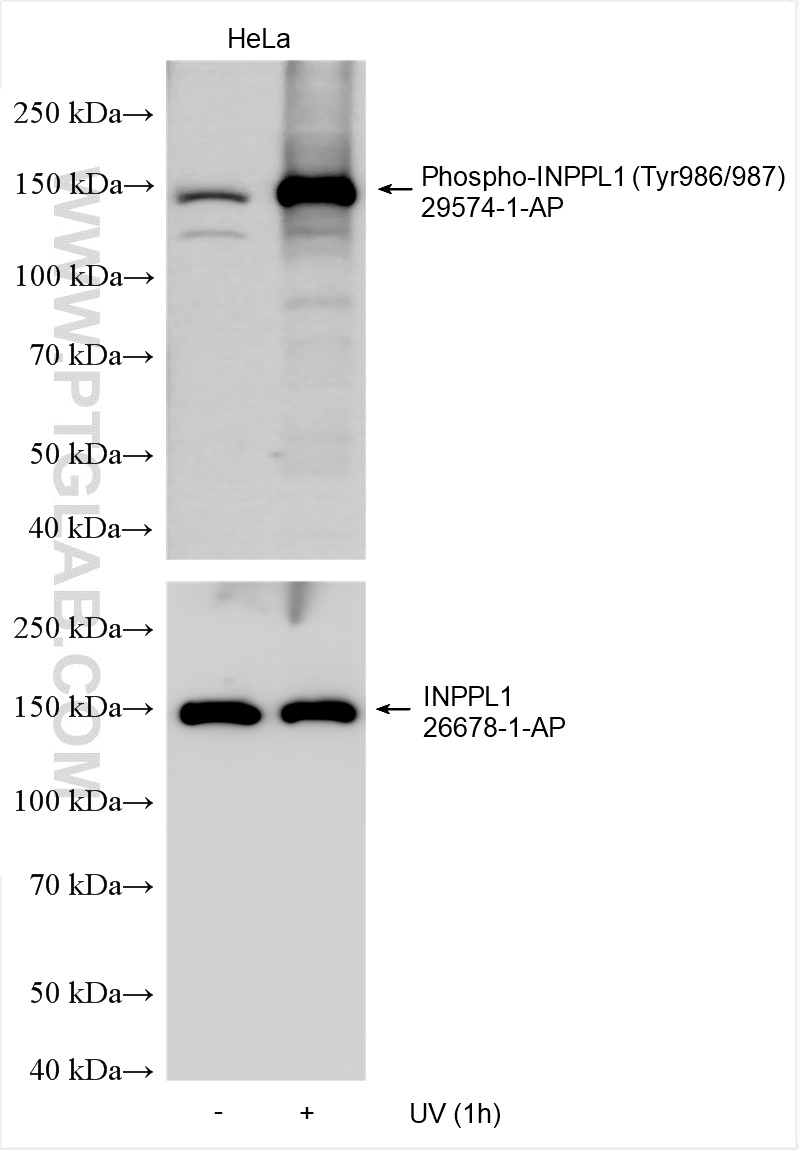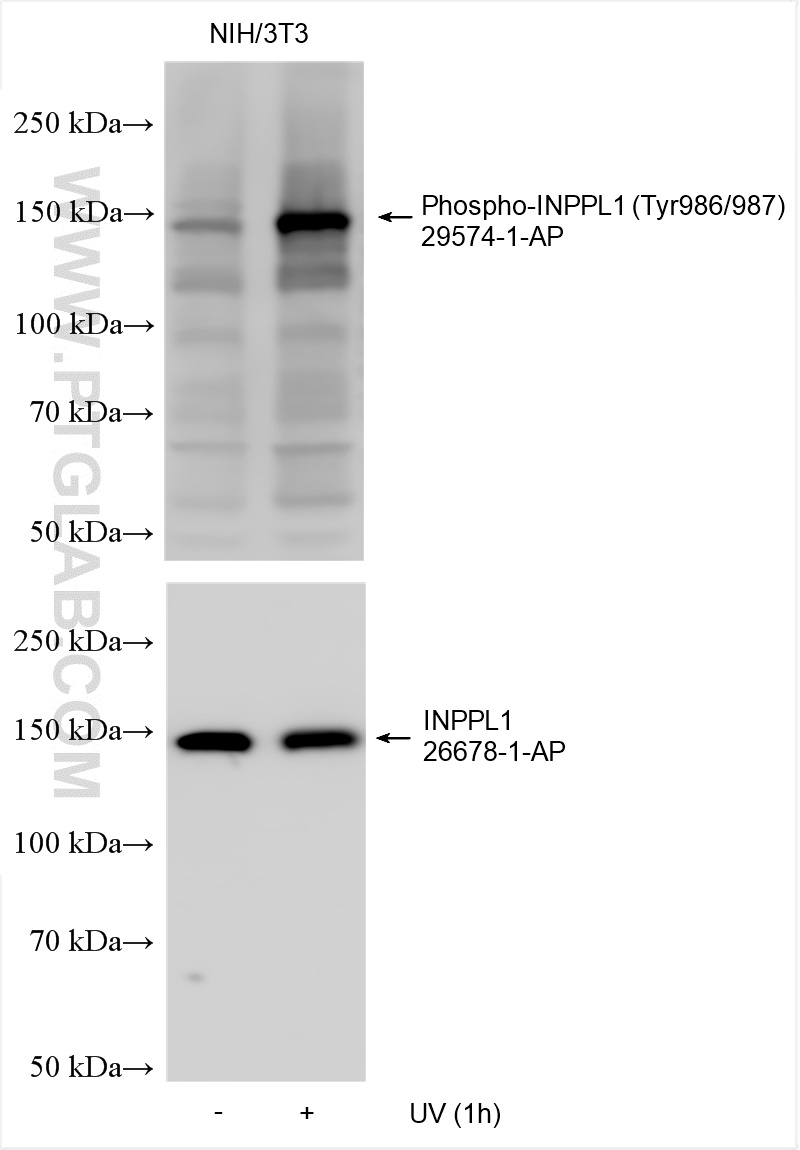验证数据展示
经过测试的应用
| Positive WB detected in | UV treated HeLa cells, UV treated NIH/3T3 cells, HeLa cells |
推荐稀释比
| 应用 | 推荐稀释比 |
|---|---|
| Western Blot (WB) | WB : 1:500-1:1000 |
| It is recommended that this reagent should be titrated in each testing system to obtain optimal results. | |
| Sample-dependent, Check data in validation data gallery. | |
产品信息
29574-1-AP targets Phospho-INPPL1 (Tyr986/987) in WB, ELISA applications and shows reactivity with Human, mouse samples.
| 经测试应用 | WB, ELISA Application Description |
| 经测试反应性 | Human, mouse |
| 免疫原 |
Peptide 种属同源性预测 |
| 宿主/亚型 | Rabbit / IgG |
| 抗体类别 | Polyclonal |
| 产品类型 | Antibody |
| 全称 | inositol polyphosphate phosphatase-like 1 |
| 别名 | INPPL 1, INPPL1, Phospho-INPPL1 (Tyr986/987), Protein 51C, SHIP 2, SHIP2 |
| 计算分子量 | 1258 aa, 139 kDa |
| 观测分子量 | 150 kDa |
| GenBank蛋白编号 | BC140853 |
| 基因名称 | INPPL1 |
| Gene ID (NCBI) | 3636 |
| RRID | AB_3085347 |
| 偶联类型 | Unconjugated |
| 形式 | Liquid |
| 纯化方式 | Antigen affinity purification |
| UNIPROT ID | O15357 |
| 储存缓冲液 | PBS with 0.02% sodium azide and 50% glycerol, pH 7.3. |
| 储存条件 | Store at -20°C. Stable for one year after shipment. Aliquoting is unnecessary for -20oC storage. |
背景介绍
Inositol polyphosphate phosphatase-like protein 1(INPPL1) belongs to the inositol and phosphatidylinositol 5-phosphatase family, also known as SH2 domain-containing inositol 5'-phosphatase 2(SHIP2), is ubiquitous in all organizations. SHIP2 is constitutively tyrosine-phosphorylated in chronic myeloid leukemia progenitor cells. In B cells, SHIP2 was most tyrosine phosphorylated after BCR and FC-γriib crosslinking and was associated with Shc, but not after BCR stimulation alone. It has also been shown that SHIP2 can be phosphorylated at Tyr-986 in COS-7 cells and Chinese hamster ovary cells overexpressing the insulin receptor. (PMID: 11349134)
实验方案
| Product Specific Protocols | |
|---|---|
| WB protocol for Phospho-INPPL1 (Tyr986/987) antibody 29574-1-AP | Download protocol |
| Standard Protocols | |
|---|---|
| Click here to view our Standard Protocols |



